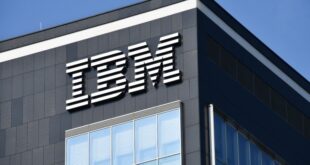Corporate finance involves managing the financial decisions of corporations to maximize shareholder value. It encompasses activities such as capital investment decisions, financing decisions (raising funds through equity or debt), and dividend policy. Corporate finance professionals analyze financial data to assess the feasibility of projects, determine the optimal capital structure to minimize costs and maximize returns, and manage risks associated with financial investments. They play a crucial role in strategic planning, mergers and acquisitions, and ensuring the financial health and sustainability of the organization. Ultimately, corporate finance aims to allocate resources efficiently and enhance the overall financial performance and value of the corporation.
Apply Here Corporate Finance Professional Certification
Which of the following is NOT a primary goal of corporate finance?
A) Maximizing shareholder wealth
B) Maximizing employee satisfaction
C) Maximizing firm value
D) Maximizing profitability
2.
What does WACC stand for in corporate finance?
A) Weighted Average Cost of Capital
B) Weighted Average Cost of Cash
C) Weighted Average Cost of Currencies
D) Weighted Average Capital Contribution
3.
The process of managing a firm’s short-term assets and liabilities is known as:
A) Financial planning
B) Capital budgeting
C) Working capital management
D) Risk management
4.
A company’s capital structure refers to:
A) The mix of short-term and long-term assets
B) The mix of debt and equity financing
C) The mix of domestic and international operations
D) The mix of products or services offered
5.
The NPV (Net Present Value) method in capital budgeting determines whether a project:
A) Adds value to the firm’s debt structure
B) Enhances shareholder goodwill
C) Increases the firm’s cash flows
D) Increases the firm’s market share
6.
Which financial statement provides an overview of a firm’s financial position at a specific point in time?
A) Income statement
B) Statement of cash flows
C) Balance sheet
D) Statement of retained earnings
7.
The term “dividend policy” refers to:
A) The distribution of profits to shareholders
B) The strategy for selling company assets
C) The allocation of funds for research and development
D) The process of issuing new shares of stock
8.
In the context of risk and return, which of the following investments typically has the highest expected return?
A) U.S. Treasury bills
B) Corporate bonds with high credit ratings
C) Stocks of established companies
D) Money market funds
9.
What is the primary goal of financial management in a corporation?
A) Minimizing costs
B) Maximizing revenue
C) Maximizing shareholder wealth
D) Maximizing market share
10.
The cost of equity is typically higher than the cost of debt because:
A) Debt payments are tax-deductible
B) Equity investors have more risk
C) Debt is less risky than equity
D) Debt holders have higher priority in bankruptcy
11.
The Modigliani-Miller theorem primarily deals with:
A) Capital structure irrelevance
B) Optimal dividend policy
C) Capital budgeting decisions
D) Financial statement analysis
12.
The term “IPO” stands for:
A) Internal public offering
B) Initial public offering
C) International public offering
D) Institutional public offering
13.
Which financial ratio measures a firm’s ability to meet short-term obligations with its most liquid assets?
A) Return on equity (ROE)
B) Current ratio
C) Debt-to-equity ratio
D) Price-earnings ratio (P/E ratio)
14.
The term “cost of capital” refers to:
A) The cost of borrowing money
B) The return required by investors
C) The cost of goods sold
D) The cost incurred in raising capital
15.
Which valuation method estimates the value of a company based on comparable companies in the market?
A) Discounted cash flow (DCF)
B) Liquidation valuation
C) Market multiples approach
D) Book value method
16.
The efficient market hypothesis suggests that:
A) Market prices reflect all available information
B) Market prices are always higher than intrinsic value
C) Investors should actively trade to beat the market
D) Stock prices are always undervalued
17.
Which financial instrument represents ownership in a corporation?
A) Corporate bond
B) Treasury bill
C) Preferred stock
D) Commercial paper
18.
The term “leverage” in corporate finance refers to:
A) The degree of financial risk undertaken by a firm
B) The use of debt to finance operations
C) The level of fixed costs in a firm’s cost structure
D) The proportion of equity financing in a firm’s capital structure
19.
A company’s EBITDA (Earnings Before Interest, Taxes, Depreciation, and Amortization) is primarily used to:
A) Calculate net income
B) Measure profitability before non-cash expenses
C) Determine the cost of equity
D) Evaluate the company’s liquidity
20.
The term “agency costs” in corporate finance refers to:
A) Costs associated with raising capital
B) Costs incurred due to conflicts of interest between shareholders and management
C) Costs of complying with government regulations
D) Costs related to marketing and advertising campaigns
 Priya Dogra – Certification | Jobs | Internships
Priya Dogra – Certification | Jobs | Internships



